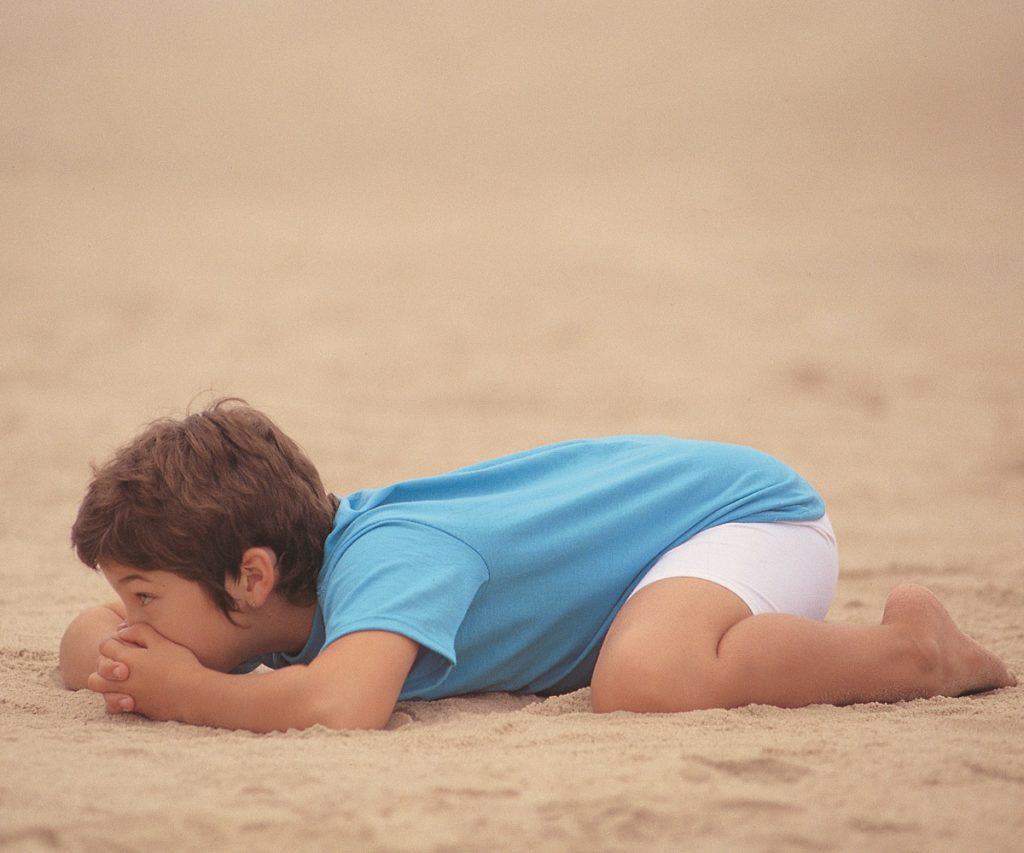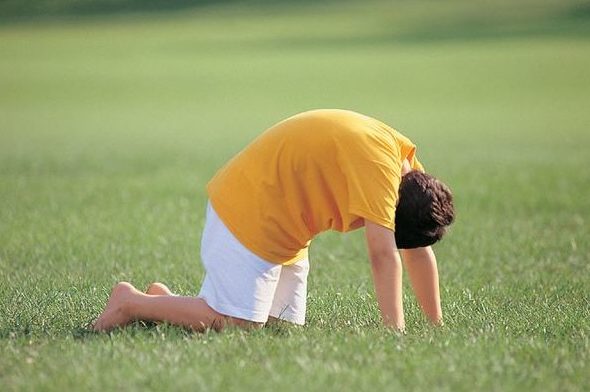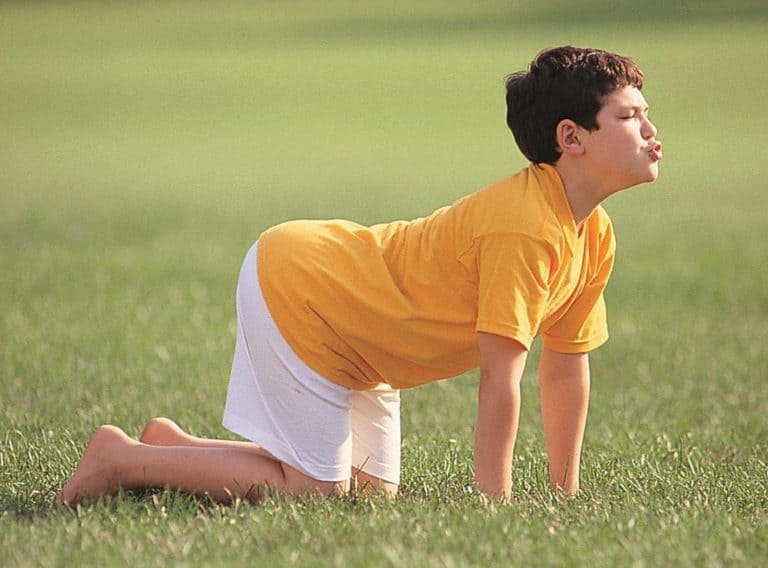

Instructions
- Begin by sitting on your heels.
- Open your knees wide apart, toes touching behind your.
- Bend forward at the hips and slide your chest along the floor.
- Place your chin on the floor or desk and put your hands (paws) over your nose to to keep warm.
- Breathe in and out for at least one minute.
Activity Ideas for Home or Classroom
Math Medley
Adult male polar bears can weigh between 750 and 1500 pounds. Females are considerably smaller, normally weighing 330 to 550 pounds. What is the difference between your students’ weight and that of a polar bear?
Ecological Echoes
Most bears hibernate. During the winter, they remain in a sleeplike state and are able to lower their body temperature, pulse rate, and metabolism. Do your students ever feel the need to hid or hibernate like a bear?
Poses as Pathways
The five “polar bear nations” where the ice bears are found are the US (Alaska), Canada, Russia, Denmark (Greenland) and Norway. Find these places on a globe. What is the name of the geographic region where polar bears range? What conditions are similar in all these places, so that they can support the lifestyles of these bears?

 Instructions
Instructions








 Instructions
Instructions